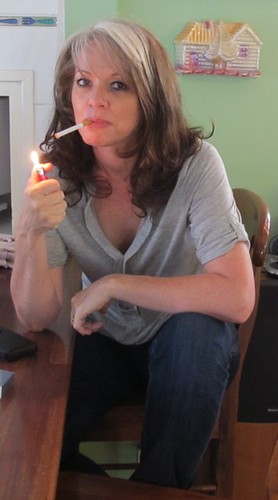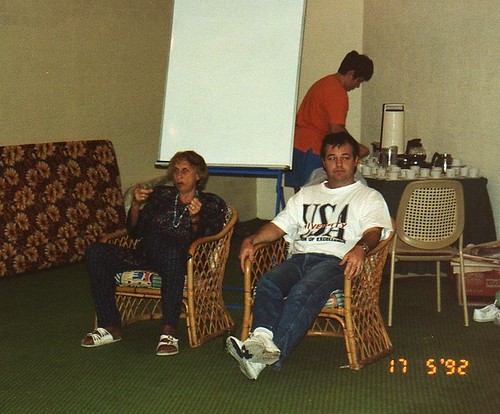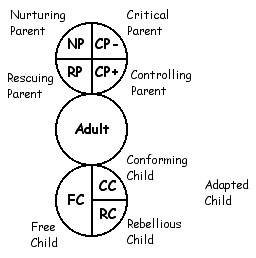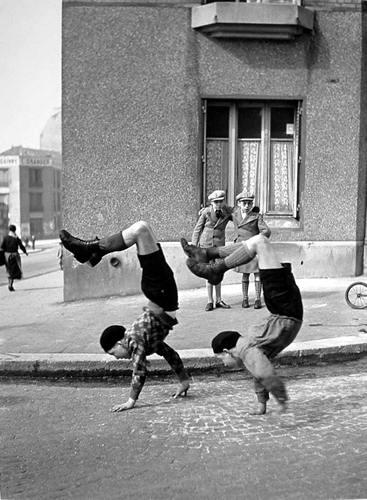Current list of university, college and training insititute libraries that have the book - Working with drug and alcohol users - released last month
The British library - British National Bibliography (UK)
Norfolk County Council (UK)
University of Sussex (UK)
Kingston University (UK)
Sandwell Hospital library (UK)
Prince of Wales Hospital library (Wales)
Library of Congress (USA)
Tennessee State University (USA)
Boise State University (USA)
Purdue University Library (USA)
University of Notre Dame (USA)
Chisholm Institute of TAFE (Aust)
Cairns Base Hospital (Aust)
National Library of Australia (Aust)
Mater Hospital Library (Aust)
University of Ballarat (Aust)
University of Canberra (Aust)
Deakin University (Aust)
Bond University (Aust)
University of Newcastle (Aust)
State library of Western Australia (Aust)
Unitec Institute of Technology (New Zealand)
Rotorua Public Library (New Zealand)
Hong Kong PolyU Library (China)
----------------------------
Working with suicidal individuals
Current list of university, college and training insititute libraries that have the book - Working with suicidal individuals. Released in 2011.
Curtin University (Aust)
University of Western Australia (Aust)
Murdoch University (Aust)
Edith Cowan University (Aust)
Bond University (Aust)
Monash University (Aust)
Victoria University (Aust)
Bankstown Campus library (Aust)
University of Sydney (Aust)
University of Adelaide (Aust)
University of Newcastle (Aust)
University of Melbourne (Aust)
University of Queensland (Aust)
University of Ballarat (Aust)
University of New England (Aust)
University of Western Sydney (Aust)
TAFE Gosford campus library (Aust)
TAFE Bathurst campus library (Aust)
TAFE Tamworth campus library (Aust)
Deakin University (Aust)
LaTrobe University (Aust)
State library of Queensland (Aust)
Queensland University of Technology (Aust)
RMIT University (Aust)
Charles Sturt University (Aust)
Australian Catholic University (Aust)
James Cook University (Aust)
National Library of Australia (Aust)
Trinity College Dublin (Ireland)
Dublin Institute of Technology (Ireland)
National University of Ireland, Maynooth (Ireland)
National library of Scotland (Scotland)
University of Strathclyde (Scotland)
National Library of Wales (Wales)
Swansea University (Wales)
University of Glamorgan (Wales)
Bangor University (Wales)
PJ Library (Norway)
University of Bergen (Norway)
Norges teknisk-naturvitenskapelige universitet (Norway)
University of Oslo (Norway)
University of Tromso (Norway)
Universitetet I Agder (Norway)
Maribor General Hospital Library (Slovenia)
National library of the Netherlands (Netherlands)
TA Centre Library (Serbia)
Mitt hogskolan library (Sweden)
Stockholm University (Sweden)
Högskolan Dalarna (Sweden)
Mid Sweden University (Sweden)
Central Library of Zurich (Switzerland)
Swiss Federal Insitute of Technology Zurich (Switzerland)
Freie Universitat Berlin (Germany)
Humboldt University of Berlin (Germany)
State and University Library of Dresden (Germany)
Bibliotheksservice - zentrum baden-württemberg (Germany)
Universitat Des Saarlandes (Germany)
University of Erlangen-Nuremberg (Germany)
Universitat Leipzig (Germany)
Bavarian State Library (Germany)
Stellenbosch University Library (South Africa)
University of California San Diego (USA)
San Diego Christian College (USA)
Open Library. California State Library (USA)
University of Southern California (USA)
University of California San Francisco (USA)
University of California Merced (USA)
Loyola Marymount University California (USA)
Golden Gate University (USA)
University of Alaska - Fairbanks (USA)
Boise State University (USA)
Huntingdon College (USA)
University of Nebraska at Omaha (USA)
Catholic University of America (USA)
Gallaudet University (USA)
Virginia Tech (USA)
Old Dominion University (USA)
City University of Seattle (USA)
University of Washington (USA)
George Washington University (USA)
University of Miami (USA)
Miami Dade College (USA)
Georgia Southern University (USA)
University of Nevada - Reno (USA)
Iowa State University (USA)
Dordt College Iowa (USA)
University of Iowa (USA)
Cameron University Oklahoma (USA)
Butler Community College (USA)
Frostburg State University (USA)
Arizona State University (USA)
Arizona Western College (USA)
Brigham Young University Utah (USA)
Bloomsburg University (USA)
Massachusetts Institute of Technology (USA)
University of Massachusetts Amherst (USA)
Williams College Massachusetts (USA)
Hampshire College (USA)
Wellesley College (USA)
Boston College (USA)
Kean University (USA)
Cedar Crest College (USA)
Cedar Park Public Library (USA)
Colorado State University (USA)
University of Minnesota (USA)
Norwich University (USA)
Santa Clara University (USA)
Ithaca College (USA)
State University of New York - Plattsburg (USA)
University of Buffalo (USA)
Marquette University Raynor Memorial Library (USA)
City University of Seattle (USA)
National Library of Medicine Maryland (USA)
Illinois State University (USA)
College of DuPage Illinois (USA)
University of Chicago Illinois (USA)
Indiana University Bloomington (USA)
Central Michigan University (USA)
St Clair County Library (USA)
University of Michigan (USA)
Grand Valley State University (USA)
Central Michigan University (USA)
University of North Carolina Chapel Hill (USA)
University of North Carolina Greensboro (USA)
University of North Carolina (USA)
University of Missouri-Columbia (USA)
University of Missouri-Kansas (USA)
Forrest Institute of Professional Psychology (USA)
Akron-Summit County Public Library, Ohio (USA)
Library of congress (USA)
Portland Community College Oregon (USA)
Mt. Hood Community College Library Oregon (USA)
National College of Natural Medicine Oregon (USA)
Oregon Health and Science University (USA)
Northeast WI Public Libraries (USA)
University of North Texas (USA)
Laredo Public Library Texas (USA)
University of Texas-Pan American (USA)
University of Texas at Dallas (USA)
University of Texas at Austin (USA)
University of Texas at San Antonio (USA)
Texas State University (USA)
St. Edwards University Texas (USA)
Texas Tech University (USA)
Lone Star College Texas (USA)
British Medical Association Library (UK)
Sheffield Hallam University (UK)
Brunel University (UK)
Kingston University (UK)
Liverpool John Moores University (UK)
Loughborough University (UK)
Stowmarket library Suffolk (UK)
Northumbria University (UK)
King’s College London (UK)
Derbyshire library (UK)
Dorset County Libraries (UK)
Berrywood Library Northampton (UK)
Oxford University library (UK)
Manchester Metropolitan University (UK)
University of Northumbria (UK)
Lancaster University (UK)
University of East London (UK)
University of Hull (UK)
University of Hertfordshire (UK)
University of Plymouth (UK)
University of the West of England (UK)
University of East Anglia (UK)
University of Cambridge (UK)
University of Exeter (UK)
University of London, Goldsmiths (UK)
Coventry City Council library (UK)
The Berne Institute (UK)
The Link Centre (UK)
Bromley Library service (UK)
Cadbury Heath Library (UK)
Kingswood Library (UK)
Nottingham Central Library (UK)
Yate Library (UK)
British Library, St. Pancras (UK)
British Library, Document supply (UK)
British Library, British National Bibliography (UK)
Ebook Library London (UK)
Hounslow Library (UK)
Barnet London Borough Library (UK)
University of Waterloo (Canada)
University of Manitoba (Canada)
Nova Scotia Community College (Canada)
Memorial University of Newfoundland (Canada)
Grant MacEwan University (Canada)
University of Western Ontario (Canada)
Saint Francis Xavier University (Canada)
University of Victoria (Canada)
Vancouver Island University (Canada)
Ryerson University (Canada)
Royal Roads University (Canada)
Simon Frasier University (Canada)
St. Clair College (Canada)
Universite de Montreal (Canada)
Universite du Quebec (Canada)
Universite du Quebec en Outaouais (Canada)
Memorial University (Canada)
Mount Saint Vincent University (Canada)
Mount Royal University (Canada)
Wilfrid Laurier University (Canada)
Cambrian College (Canada)
Kwantlen Polytechnic University (Canada)
University of Lethbridge (Canada)
Concordia University (Canada)
University of Guelph (Canada)
Library and Archives Canada (Canada)
Executive Counseling and Training Academy (Singapore)
Ngee Ann Polytechnic Library(Singapore)
Singapore Polytechnic Library (Singapore)
National University of Singapore (Singapore)
Nanyang Technological University (Singapore)
City University of Hong Kong (China)
Hong Kong Academic Library (China)
National Cheng Kung University (Taiwan)
National Chengchi University (Taiwan)
Taipei City Hospital library (Taiwan)
National Kaohsiung Normal University Library (Taiwan)
National Bibliographic Information Network (Taiwan)
University of Auckland General Library (New Zealand)
University of Auckland Philson Library (New Zealand)
Mental Health Foundation of New Zealand (New Zealand)
University of Canterbury (New Zealand)
Lincoln University (New Zealand)
Northtec library (New Zealand)
Auckland University of Technology (New Zealand)
Unitec Institute of Technology (New Zealand)
Eastern Institute of Technology (New Zealand)
University of Otago (New Zealand)
Rotorua District Library (New Zealand)




























